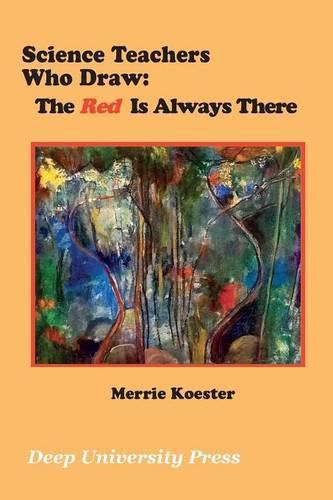Readings Newsletter
Become a Readings Member to make your shopping experience even easier.
Sign in or sign up for free!
You’re not far away from qualifying for FREE standard shipping within Australia
You’ve qualified for FREE standard shipping within Australia
The cart is loading…






This title is printed to order. This book may have been self-published. If so, we cannot guarantee the quality of the content. In the main most books will have gone through the editing process however some may not. We therefore suggest that you be aware of this before ordering this book. If in doubt check either the author or publisher’s details as we are unable to accept any returns unless they are faulty. Please contact us if you have any questions.
Science Teachers Who Draw: The Red Is Always There. This is an invaluable resource for teachers, teacher educators, and qualitative researchers, with color illustrations. There is a book which asks, What happens when science teachers adopt an aesthetic approach to inquiry, using drawing to communicate deep understanding? This narrative inquiry was driven by quantitative studies which reveal a robust positive correlation between students’ test scores in reading and science, beginning at the middle school level. When the data are disaggregated, there exists a vast achievement gap for low income and English language learners. Science teachers are faced with a semiotic nightmare. Often possessing inadequate pedagogical content knowledge themselves, science teachers must somehow symbolically communicate often highly abstract knowledge in ways that can be not only be decoded by their students’ but later used to construct deeper, more differentiated knowledge, which can be applied to make sense of and adapt successfully to life on Planet Earth. This book documents the ways in which science teacher researchers used drawing to construct semiotic spaces inside which students acquired significant aesthetic capital and agency. Many previously failing students brokered this new capital into improved academic achievement and a sense of felt freedom. The author sought not to displace in any way the important traditions of situated, constructivist scientific inquiry, but instead, to convincingly argue that intrinsically inexact, artistic, and poetic ways of understanding and communicating the meaning, context, and processes of science phenomena can catalyze learning reactions resulting in a broad, meaningful spectrum of understanding for all students.
$9.00 standard shipping within Australia
FREE standard shipping within Australia for orders over $100.00
Express & International shipping calculated at checkout
This title is printed to order. This book may have been self-published. If so, we cannot guarantee the quality of the content. In the main most books will have gone through the editing process however some may not. We therefore suggest that you be aware of this before ordering this book. If in doubt check either the author or publisher’s details as we are unable to accept any returns unless they are faulty. Please contact us if you have any questions.
Science Teachers Who Draw: The Red Is Always There. This is an invaluable resource for teachers, teacher educators, and qualitative researchers, with color illustrations. There is a book which asks, What happens when science teachers adopt an aesthetic approach to inquiry, using drawing to communicate deep understanding? This narrative inquiry was driven by quantitative studies which reveal a robust positive correlation between students’ test scores in reading and science, beginning at the middle school level. When the data are disaggregated, there exists a vast achievement gap for low income and English language learners. Science teachers are faced with a semiotic nightmare. Often possessing inadequate pedagogical content knowledge themselves, science teachers must somehow symbolically communicate often highly abstract knowledge in ways that can be not only be decoded by their students’ but later used to construct deeper, more differentiated knowledge, which can be applied to make sense of and adapt successfully to life on Planet Earth. This book documents the ways in which science teacher researchers used drawing to construct semiotic spaces inside which students acquired significant aesthetic capital and agency. Many previously failing students brokered this new capital into improved academic achievement and a sense of felt freedom. The author sought not to displace in any way the important traditions of situated, constructivist scientific inquiry, but instead, to convincingly argue that intrinsically inexact, artistic, and poetic ways of understanding and communicating the meaning, context, and processes of science phenomena can catalyze learning reactions resulting in a broad, meaningful spectrum of understanding for all students.